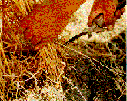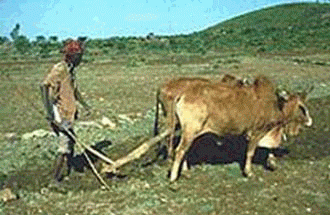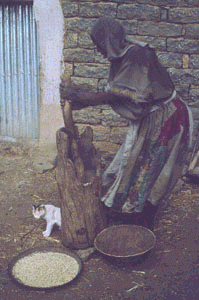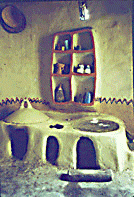 |
|
|
Paleoethnobotany is a branch of archaeology which studies how people
in the past used plants. Plant remains found in archaeological sites can
tell us a great deal about the people who once lived there. Paleoethnobotanists
study the remains of ancient plants (mainly seeds) preserved in archaeological
contexts which can be retrieved by flotation.
 |
|
|
 |
|
|

Plant remains may also reveal how plants were domesticated.
| Wild Einkorn
The ear is fragile, easily breaking and dispersing the seeds. |
Domesticated Einkorn
The ear does not shatter easily. The seeds are scattered only when the ear is threshed. |


| Africa | Near East | East Asia | Europe | North America | Pacific Islands | South America |
| sorghum
tef pearl millet finger millet cow pea African rice yams oil palm watermelon okra |
wheat barley peas chickpeas fava beans lentils carrots beets safflower olive fig dates fenugreek |
rice
millets buckwheat soybean adzuki beans turnips Chinese radish canola seed apricot peach water chestnut cucumber sesame tea |
oats
rye beets hazelnut plum apple cabbage almond pear lettuce carob onions grape |
corn (maize)
common bean lima bean chili pepper sweet potato tobacco sunflower papaya pumpkin tomato bottle gourd squash |
breadfruit
sweet potato taro arrowroot coconut yams lemon grapefruit orange mangos bananas cloves black pepper eggplant sugar cane |
quinoa
common bean manioc squash tobacco cacao sweet potato potato cotton avocado cashews pineapple papaya peanut |
This page is based on an exhibit at the Museum of Archaeology and Ethnology, Department of Archaeology, Simon Fraser University, Canada. The Museum of Archaeology and Etrhnology exhibit was originally created by Ms. K. Spicer and Ms. D. Davidson. Information and photos supplied by Dr. A.C. D'Andrea and Dr. D.E. Lyons. Web page by Dr. B. J. Winter.
For more information on ethnoarchaeological
research in Ethiopia, click here.